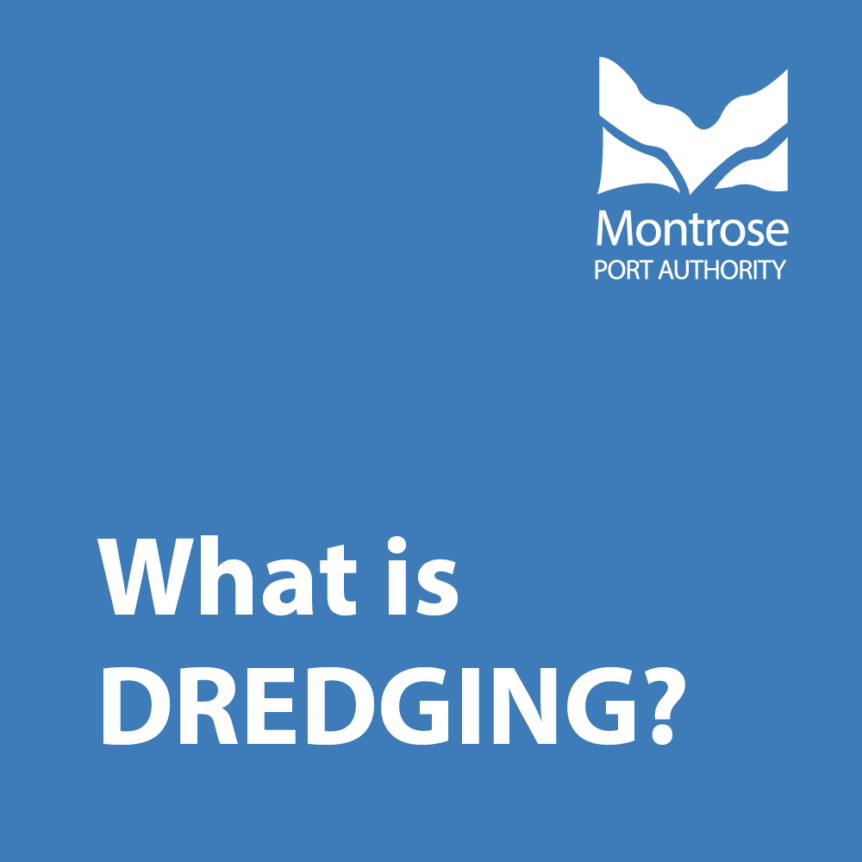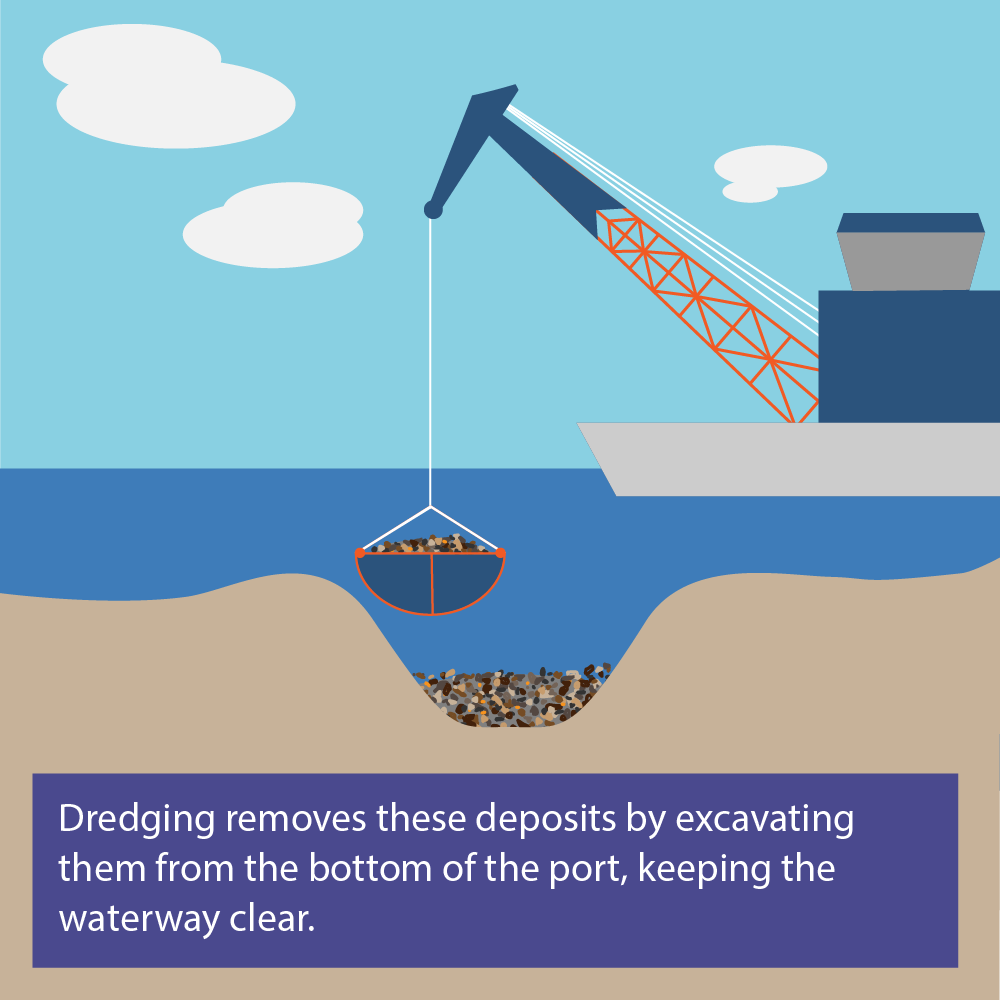FAQs: All About Dredging

In order to keep Montrose Port fully operational we are undertaking a programme of maintenance dredging between 12th and 15th June. We understand this is a sensitive issue and want to assure you that the work will be carried out to the highest professional and environmental standards.
We have provided a list of FAQs below about dredging and why it is essential which we hope will address any queries.
What is dredging?
Dredging is a form of excavation carried out underwater or partially underwater to remove sediments and debris from the bottom of lakes, rivers, ports and other water bodies. The process keeps waterways and ports navigable by gathering up bottom sediments and transporting it elsewhere.

How does it work?
Dredging is a four part process: loosening the material, bringing the material to the surface, transportation and disposal.
Why do we carry out dredging?
Maintenance dredging is a necessity for almost every navigable waterway and port in the world. Ports dredge to deepen or maintain navigable waterways or channels which can become silted with the passage of time due to sedimented sand and mud. Providing unimpeded access to terminals for vessels and appropriate water depths for ships is critical to ensuring trade is conducted safely.

How often does maintenance dredging take place?
Due to damage from weather conditions and increasing climate changes, the demand for dredging has increased in recent years. Montrose Port carries out dredging up to twice a year, depending on weather conditions.
What happens if the Port is not dredged?
If the Port is not dredged regularly then the deposits of sediment build up too much and stop vessels coming in through the channel. In this instance the Port has to close, with serious impacts on the supply chain and the local economy. In order for the Port to operate safely and successfully dredging must take place
As a Trust Port, it is our responsibility to balance growth in trade with the need to protect our environment and respect the quality of life of our neighbours. Dredging is one of the many ways we are meeting our commitments to the growth of the Port and the stakeholders who use it.
A recent economic impact assessment found that the Port supports both directly and indirectly 300 permanent, full time employees. This equates to £12million in annual salaries and £24 million GVA (Goods Value Added) in Angus.
Where does the sediment go?
In the past sediment was transported to Lunan Bay to be deposited. However, as a result of consultation with the local community and Angus Council the sediment is now deposited at Montrose Bay as part of the conditions of our licence. This aims to offset naturally occurring coastal erosion which has been taking place up the East coast for a number of years and has also affected nearby Montrose golf course.
Does dredging cause coastal erosion?
We often have enquiries relating to the link between dredging at the Port and erosion at Montrose golf course. In order to answer this conclusively we commissioned marine consultancy ABPmer to carry out a coastal assessment of Montrose and the surrounding area in 2017. The report showed that there is no evidence to support this link and that coastal erosion at the golf course is part of a wider geographical issue affecting the East Coast.

